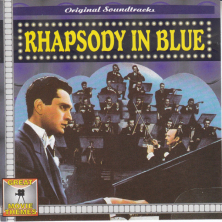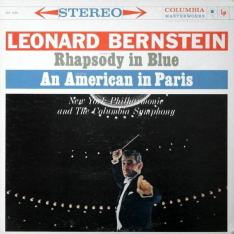Latest News
My Love Affair with Rhapsody in Blue
Posted March 18, 2025
My Love Affair with Rhapsody in Blue
By John Bayless

Where did it all begin? It began in a small town, somewhat desolate, on the windswept plains of West Texas. The terrain was filled with oil rigs, pump jacks, and cattle, with the small and sparse mesquite bushes – the only touch of greenery amid this vast, lonely terrain. The only sounds were the churning of the pump jacks pulling the “black gold” out of the earth, and the prehistoric bellows of the cows. No one would ever imagine a love affair could blossom in this setting except maybe in a Hollywood, Netflix, or Showtime series. Yet amidst the stillness and isolation, I managed to create my own, inner movie! I was very blessed to have a mother and a grandmother who acted as my producer and director of this movie.

On afternoons when my mother ran her errands or went to the beauty shop, she'd drop me off at my grandmother's house, where my grandma played records for me. On one particular afternoon, she played me one of her all-time favorites, Rhapsody in Blue. Now, about these records: They were 78rpm. You’d be enjoying the music and wrapped up in the moment when CLUNK – mid-phrase – time for another record to drop down on a turntable and continue with the piece. But this was no ordinary recording, and for sure no ordinary piece. It was, after all, Rhapsody in Blue. And not just any old Rhapsody in Blue; this was the original, iconic Oscar Levant - Paul Whiteman Columbia recording!!! This is the moment when I was hooked: swept up by the excitement, romance, and rhythmic universe – the aura and spirit of GEORGE GERSHWIN! From that moment on, I would never be the same.
Some years later, a decade perhaps, my grandma bought me another recording of Rhapsody in Blue. This time, there were no mid-phrase interruptions rudely disrupting the mood and line of the music. You see, we had advanced to the glorious 33 1/3 format: pure heaven. With this new technology, Mr. Levant, I would say respectfully, was not jilted by, so much as simply replaced by my one and only real hero, Leonard Bernstein. WOW - WOW - HOLY WOW! What a record! Leonard Bernstein - the New York Philharmonic - Rhapsody in Blue - stereophonic - high fidelity. The Philharmonic, the Maestro at the keyboard. And best of all, the complete piece on one side. Yay!!

With this new, joyously, divinely spirit-filled experience, my imagination soared. Through the years, I have probably performed the Rhapsody thirty-five or forty times with jazz bands, original orchestrations, wind ensembles, and even banjoes. I, of course, performed mostly with symphonic scoring. Touring the piece with the Royal Liverpool Philharmonic Orchestra, Boston Symphony, San Francisco Symphony, and the Hollywood Bowl Orchestra.
For me, the most difficult, or shall I say challenging, aspect of performing Rhapsody is finding and keeping the internal rhythms and pulse that hold and bind it all together. We all know that the definition of “Rhapsody” is “an effusively, enthusiastic, or ecstatic expression of feeling, a free instrumental composition in one extended movement.” I have heard and witnessed countless performances of this beloved piece with countless performers. Most performers, when they come to the first virtuosic passages, want to run, run, run. They need to show off their technical prowess. It is like waving red in front of a bull! While it may be exciting and fun, my feeling is that those passages need to have some rhythmic proportions to the rest of the piece. The piece is fragmented, as is – so finding the moments of rhythmic and harmonic similarities is paramount. The rhythmic proportions and cohesiveness of LB’s overall concept and execution on the piece were precisely what attracted and spoke to me decades ago.
After my Carnegie Hall debut, where I played the Rhapsody, one of my friends commented, “Johnny, you were so influenced by the Bernstein recording.” I responded, “Well, DUH.” What started as a love affair has turned into a full-blown, rewarding, complete relationship – one that has grown and evolved through all these many years. Even now, as I am reinventing myself as a one-handed pianist, as the result of a stroke, I have come up with my own version of Rhapsody in Blue for the left hand.
We are all blessed to have this magnificent, iconic piece of music to listen to – and some of us are extra blessed to be able to play and perform it. Rhapsody in Blue will long continue to bring joy to millions and millions all around the world. It is the piece that keeps on giving, giving, and giving!
--
John Bayless is a concert pianist, composer, teacher, and recording artist, renowned for blending classical technique with popular music through imaginative improvisations. After a stroke in 2007 left him unable to use his right hand, he re-learned to play with his left and continues to inspire audiences worldwide. Please check out the documentary Left Alone Rhapsody, which chronicles John's rise from four-year-old Texas musical prodigy to international stardom: leftalonerhapsody.com.